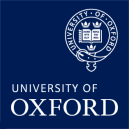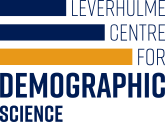Ekaterina (Kat) Degtiareva
Kat is a doctoral student at the ESRC Centre for Doctoral Training in Healthcare Data Science, supervised by Prof. Jennifer Dowd, Prof. Charles Rahal, and Dr. Andrea Tilstra. Her current research focuses on the human microbiome as a novel pathway linking social disadvantage to health, using longitudinal population data, machine learning, and causal inference methods. She is especially interested in how microbial features contribute to chronic disease risk, social gradients in health, and the biological embedding of inequality over the life course.
With a background in sociology, Kat brings a strong interest in theory-driven questions about health and inequality into her computational work. She previously completed an MPhil in Sociology and Demography at Oxford, where her dissertation (supervised by Dr. José Manuel Aburto) used advanced statistical models to analyse COVID-19-related excess mortality in Russia. She continues to draw on her foundation in demographic methods, population health, and computational analysis in her current research.’
Ekaterina (Kat) Degtiareva
Kat is a doctoral student at the ESRC Centre for Doctoral Training in Healthcare Data Science, supervised by Prof. Jennifer Dowd, Prof. Charles Rahal, and Dr. Andrea Tilstra. Her current research focuses on the human microbiome as a novel pathway linking social disadvantage to health, using longitudinal population data, machine learning, and causal inference methods. She is especially interested in how microbial features contribute to chronic disease risk, social gradients in health, and the biological embedding of inequality over the life course.
With a background in sociology, Kat brings a strong interest in theory-driven questions about health and inequality into her computational work. She previously completed an MPhil in Sociology and Demography at Oxford, where her dissertation (supervised by Dr. José Manuel Aburto) used advanced statistical models to analyse COVID-19-related excess mortality in Russia. She continues to draw on her foundation in demographic methods, population health, and computational analysis in her current research.’



